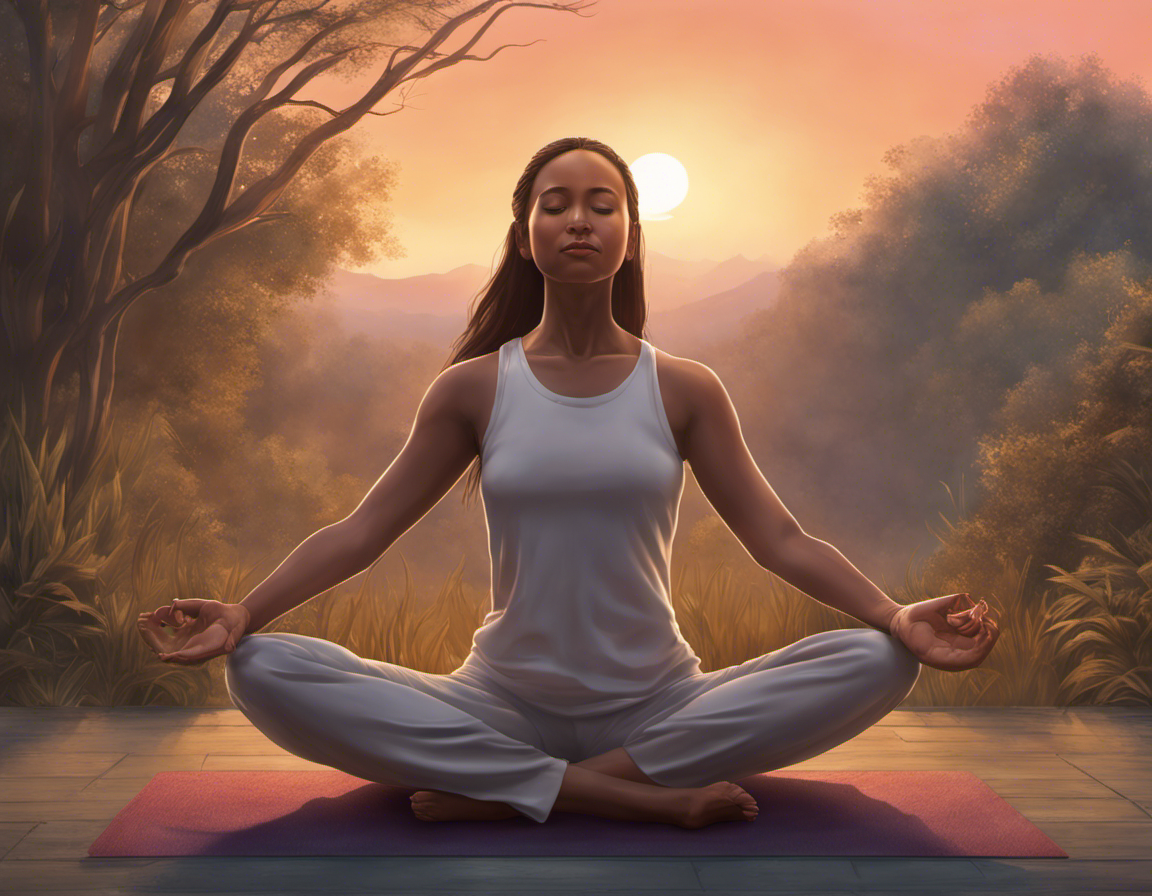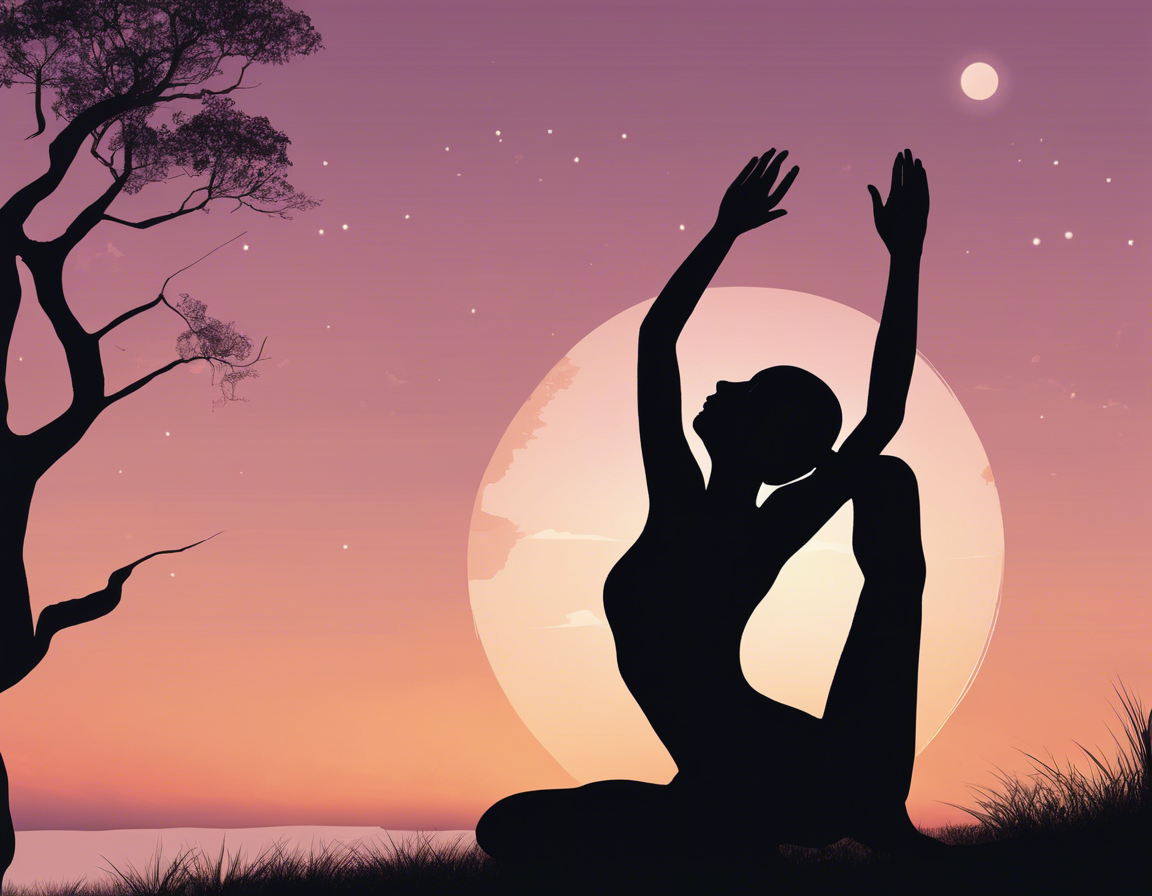Discover Yoga: Stress Management, Sleep Efficiency and Daily Practice Guide

Are you seeking reprieve from the everyday stresses of life? Relaxation and quality sleep seem elusive as you grapple with your bustling daily routine. Fear not, as the ancient practice of Yoga might hold the answers. This article aims to introduce beginners to the profoundly transformative world of Yoga, demonstrating how this millennia-old discipline can aid in managing stress, enhancing sleep quality, and promoting overall well-being.
In this insightful guide, we will delve into the basics of Yoga, from its different styles to the essential postures suited for beginners. With an understanding of these foundational elements, we’ll also explore the strategies to incorporate Yoga into your hectic daily routine seamlessly. Furthermore, we will illustrate how specific Yoga routines can be tailored for pre-sleep relaxation and enhance sleep efficiency.
Yoga is much more than physical practice – it’s a lifestyle that fosters a deep connection between mind and body. Recognizing this, our discussion extends beyond physical postures and encompasses deep breathing practices, mindfulness, and meditation as integral parts of Yoga. While yoga promises numerous benefits, it is crucial to ensure safe practice, which is why our guide wouldn’t be complete without delineating essential safety measures and precautions.
Embark on a journey with us into the world of Yoga and take a step towards wholesome living – transforming stress into serenity, sleeplessness, and soothing slumber.
Have you ever wished to escape the hustle-bustle of daily life, finding tranquility from within? Imagine if the answer lies within the realm of your body and mind, beautifully unified by Yoga. Intrigued? Let’s journey together on this transformative path.
Understanding the Basics of Yoga
Yoga, a word that originated from Sanskrit, signifies ‘union’ or ‘connection’. The confluence of mind, body, and soul is what yoga seeks to establish. An age-old practice that started in ancient India, today, it’s seen as a universal path towards holistic health and well-being. But it’s more than just stretching or mastering challenging poses. It propels deep-seated mindfulness, with an equal emphasis on meditation and breath control.
Importance of Yoga for Stress Management and Relaxation
Stress is an unwelcome guest disrupting peace and well-being in today’s fast-paced routines. How can we combat it? Let’s delve into how yoga can be our stress-buster!
How Yoga Induces Relaxation and Combats Stress
Yoga, perceived as a moving meditation, induces relaxation by easing muscular tension and improving blood circulation. The intentional focus on breath, along with soft postural flow, helps lower the heart rate, resulting in a calming effect on the nervous system. Further, practicing yoga enhances our body’s production of endorphins—our natural stress fighters and mood elevators. The balance between effort and surrender during yoga helps our body learn how to respond rather than react to stressful circumstances.
Beginners’ Introduction to Yoga
Taking up yoga might seem overwhelming with its different variants and complex terminologies. However, once you comprehend its essence, yoga can become an enjoyable routine that you eagerly look forward to!
Different Styles of Yoga and Their Benefits for Relaxation and Sleep Efficiency
There are numerous styles, each with its beauty, but let’s navigate through some popular ones specifically beneficial for relaxation and enhancing sleep quality:
- Hatha Yoga: This form, a classic starter style, involves slow-paced yet deep stretch postures that promote relaxation and mindfulness. Its gentleness makes it ideal for beginners.
- Restorative Yoga: As the name reflects, it aims to restore the body’s vital energy using props for a profound relaxation experience, making it especially advantageous prior to sleep.
- Yin Yoga: This style involves holding relatively easy postures for extended periods. This form enables deeper stretch and relaxation, improving joint mobility and inducing tranquility – an excellent way to wind up your day.
The essence lies not in mastering all styles but in understanding the rhythm of your body and mind, choosing what resonates with you the most. No matter what style you choose, the key is consistency. Adopting yoga as a lifestyle will lead to a healthier, happier illumination from within!
“Did you know that yoga not only strengthens your body but also induces mental tranquillity and promotes sound sleep? That’s right! By integrating yoga into your lifestyle, you can manage stress, boost your sleep quality, and improve your overall well-being.”
Understanding the Basics of Yoga Poses
You don’t have to be a contortionist to practice yoga. Simple yoga poses designed for beginners can usher you into a world of self-awareness and tranquility. These basic poses, or ‘asanas’ as known in the yogic tradition, not only serve as a stepping stone towards more complex sequences but also provide immediate benefits in terms of relaxation and stress relief.
Explanation and demonstration of simple yoga poses for beginners.
Starting with the easiest and most popular pose, the Corpse Pose- not as macabre as it sounds, this asana involves laying flat on your back in a relaxed state, channeling inner peace. Then we have the Child’s pose, which stretches the lower back and calms the mind. The downward-facing dog is another pose offering numerous advantages, including strengthening the upper body and soothing the nervous system.
Incorporating Yoga Practice into Daily Routine
Sticking to a regular yoga schedule might seem daunting at first glance, especially amidst our busy lives. However, with motivation, consistency, and a few time management techniques, practicing yoga can easily become a part of your daily routine.
Strategies and tips to integrate regular yoga practice for stress relief
The key is to start small; even 10 minutes of daily yoga in the morning can make a significant difference. Set attainable goals like adhering to practice a week thrice initially and gradually increasing the frequency. Experiment with different times of day to find what suits you best – it could be an energizing sun salutation sequence at dawn or tranquil moon salutations before bed.
Improving Sleep through Yoga
Imagine easing into a deep, restful sleep after a calming yoga routine. Sounds perfect, doesn’t it? Yoga, particularly before bedtime, has greatly enhanced sleep quality.
Yoga routines are specifically tailored for pre-sleep relaxation.
Restorative yoga poses like Legs Up the Wall Pose or Reclining Bound Angle Pose can be particularly beneficial for inducing sleep. Yoga Nidra or Yogic Sleep, a state of consciousness between waking and sleeping, often guided by an instructor’s voice, is also recommended for those with insomnia. A consistent evening yoga ritual can help you unwind and prepare your body for a night of rejuvenating rest.
Mind-Body Connection in Yoga
Yoga is more than just physical movement; it’s about cultivating mindfulness, honing your focus, and establishing a connection to the breath. The intertwined elements of deep breathing exercises, ‘pranayama’, mindfulness ‘dharana’, and meditation ‘dhyana,’ form the very essence of yoga.
The role of deep breathing, mindfulness, and meditation in yoga
Pranayama techniques help manage stress and anxiety by lowering heart rates and blood pressure. The mindfulness aspect involves focusing on how each pose feels, grounding you in the present moment. Formal meditation as part of yoga practice leads to increased tranquillity, improved concentration, and a profound sense of peace.
Safety Measures and Precautions in Yoga
While plunging headfirst into your newfound love for yoga might seem tempting, ensuring safety during your practice is paramount.
Essential guidelines for safe practice to avoid injuries
Always start with warm-up stretches to prepare your body. Listen to your body’s signals, and never push too hard that it starts to hurt. Use props like blocks or straps when needed, and don’t hesitate to modify poses based on your comfort. Practicing under expert supervision initially is highly recommended to maintain correct body alignment and avoid injuries. Remember, yoga is not about perfection but the journey towards improved health and well-being.
Conclusion
This journey we’ve undertaken together has revealed the unfathomable depths of Yoga, echoing how it’s more than just a fitness regimen but a way of life. Yoga, with its assortment of styles and poses, can alleviate stress, enrich your sleep quality, and catalyze a holistic development of body and mind.
You need to acknowledge that this path requires patience, perseverance, and safety while exploring the core of this ancient practice. We’ve considered various facets of yoga, such as its basics, styles, ways to make it an integral part of the daily schedule, poses that promote sound sleep, and the pivotal role of safe practice.
Replacing the noise of chaos with the melody of relaxation, yoga is an effective tool against stress. Acquainting ourselves with its rhythm is equivalent to better understanding our minds and bodies. By choosing a style that harmonizes with your being and by ensuring regular practice, yoga can be transformative in promoting well-being.
A commune with Yoga signifies nurturing your physical health while nourishing your mental sanctuary. Sprinkle your path towards wholesome living with the purity of Yoga. As an endnote, delve deeper! Expand your knowledge about yoga, practice diligently, and unravel its ultimate potential within you. Remember – harmony is not a destination but a journey itself. Happy journeying!




Comments